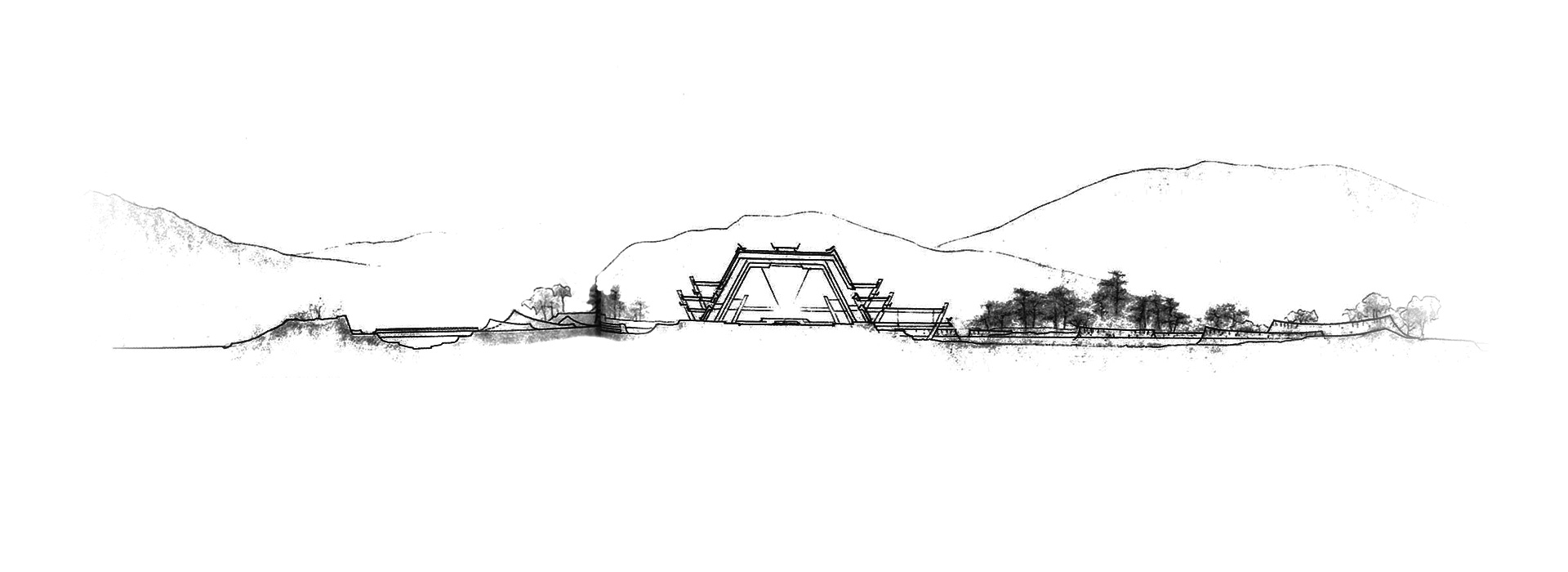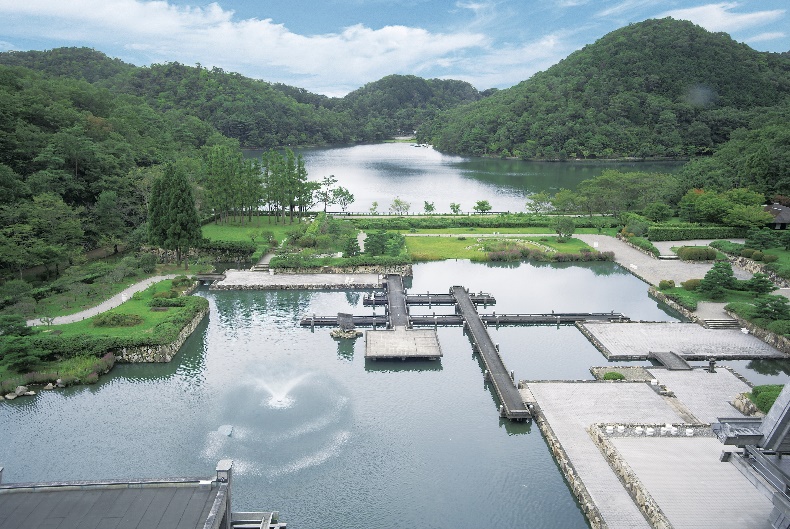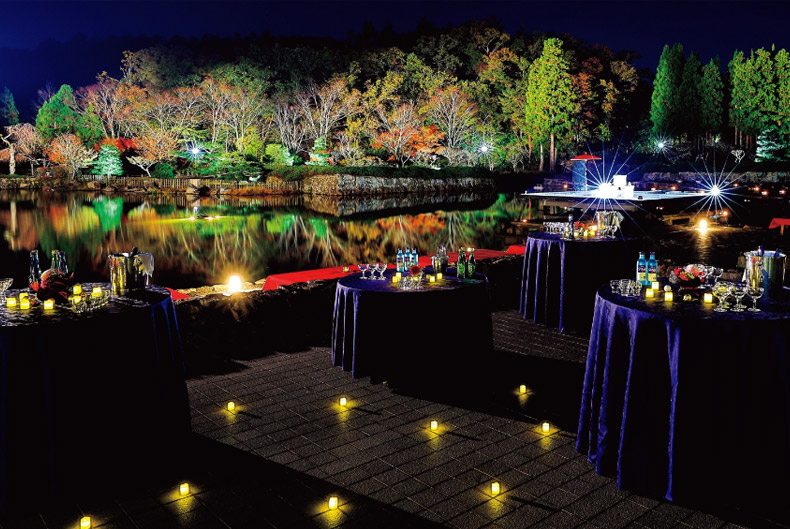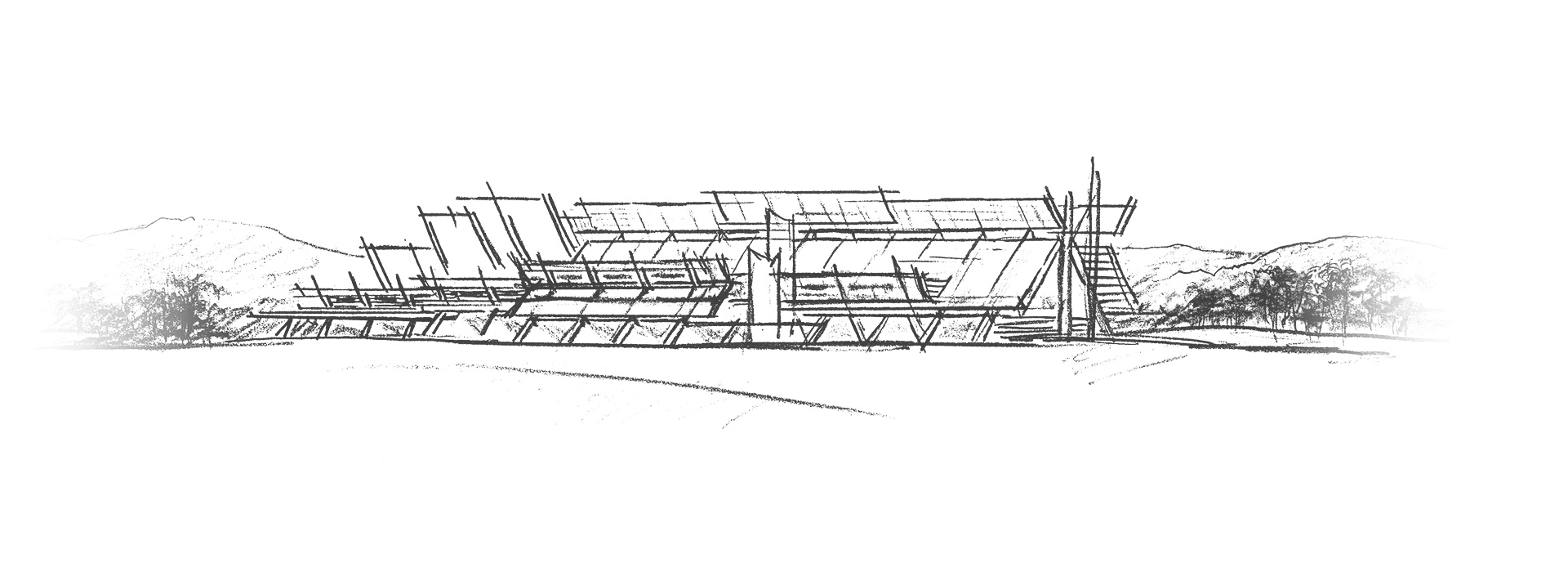Architecture & Art > Japanese Garden
Japanese Garden
Japanese Garden as the Stage for Exchange and Interaction
ICC Kyoto is surrounded by verdant nature, nestled in a peaceful valley with Mt. Hiei in the background. The architect who designed the conference center, Sachio Otani (1924-2013), believed that architecture is perceived within the setting of its environment and is therefore inseparable from nature.
This also relates to ICC Kyoto’s architectural concept of “humans gathering and conversing within nature”.
Instead of the straight lines used in typical buildings, ICC Kyoto’s unique architectural design is a mix of trapezoids and inverted trapezoids, allowing the building to harmonize with the surrounding mountain landscape.
When looking towards the northeast from Takaragaike Park, visitors can admire the borrowed scenery of architecture blending perfectly with nature, with the mountains of northern Kyoto and Mt. Hiei in the background, Takaragaike Lake in the foreground, and ICC Kyoto in between.
 An initial sketch imagining a conference center breathing in nature (by Sachio Otani)
An initial sketch imagining a conference center breathing in nature (by Sachio Otani)

The Japanese garden at ICC Kyoto is designed for walking around, with bridges criss-crossing over the lake and beautiful views of sakura cherry blossoms in spring and fall foliage in autumn.
During breaks in events or conferences, participants can stroll through the garden and enjoy the feel of the breeze flowing through the plants and trees or the sound of flowing water, taking in the ever-changing appearance of the garden.
The interwoven bridges are affectionately known as “yatsuhashi”, named to be a soothing place where visitors can relax between meetings.
In keeping with ICC Kyoto’s role as a place for international meetings and events, the Japanese garden can also be used for parties and receptions, entertaining guests from all over the world with performances of traditional arts on the stage
in the lake or a Japanese mise en scène throughout the garden.
Experiencing Japanese Culture through Gardens
 By Sachio Otani
By Sachio Otani
In Japanese, the phrase “teioku ichinyo” refers to perfect harmony between buildings and gardens.
Architect Sachio Otani incorporated many elements of Japanese culture such as borrowed scenery, the “sukiya-zukuri” architecture style, thatched roofing, terraced rice paddies, and the aforementioned “teioku ichinyo” so that guests from abroad could experience Japanese culture through the garden and architecture of the conference center.
In Japanese gardens, there are specific vantage points that show beautiful scenery, where the view of the visitor is said to create the garden.
In the garden at ICC Kyoto, the observation deck was designed to showcase the harmony between the building and the garden, with a view of borrowed scenery that shows ICC Kyoto and Mt. Hiei at the same height.
The Essence of Japanese Gardens
40% of a garden is in its initial construction and the remaining 60% is in its cultivation and management.
Ueyakato Landscape, who is entrusted with the maintenance of the garden at ICC Kyoto, says that this is both an important philosophy as well as an cautionary lesson, passed down through gardeners in Kyoto over the centuries.
Ueyakato Landscape Website
Starting with its creation, the value of a garden steadily increases by cultivating its growth through daily care and maintenance.
In the context of Kyoto’s 1200 years of history, at around 50 years old the garden at ICC Kyoto is still young and expected to continue to mature into a spectactular garden throughout the next 100 and 200 years.
ICC Kyoto is committed to continuing to cultivate the garden and welcome guest from around the world with its beauty.
